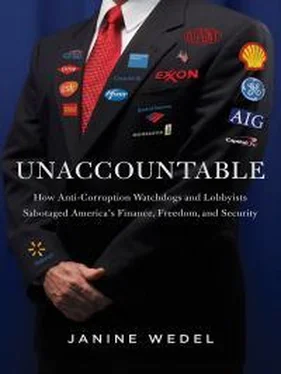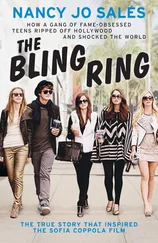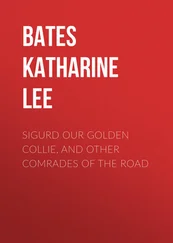This is great. But how many of us even know the outlets Yglesias references above, aside from, say, the New York Times , Wall Street Journal , Financial Times , and Economist ? And what tiny percentage of any population has the time, let alone the savvy or wherewithal, to know where and how to look? The average reader is just that—average. Moreover, Yglesias, a magna cum laude Harvard graduate in philosophy, has been writing since his days spent earning that degree. In his list above, he has chosen almost entirely legacy media sites where the standards are high; most of us who might Google a particular topic aren’t necessarily familiar with these standards and might get one of the gamed results that power brokers pay to put front and center. Yet, as we have seen, more and more people are getting their news through their phone, on the fly, hardly the environment to offer much context. And when news comes from real friends or social-media “friends,” it is they, not necessarily a professional like Yglesias, who are now your editors. Twitter feeds and Facebook pages of influence groups constantly post stories, typically with a quick slant attached. And people now often receive articles that have been aggregated; so even if the original article has the proper disclosures and disclaimers, those can easily get buried as they go through various “shares” and retweets, often given a new slant with each new share.
The fact is that most of us simply do not have the knowledge or the patience to sort through and select sources, nor do we know the quirks of each publication to mitigate being seduced by the above-mentioned gaming of the search system. Practitioners of the dark arts are, of course, trolling for ever-more-sophisticated digital, deceptive ways. They are set up for success: old media have been pounded to within an inch of their lives, and the new media/Internet, despite many noble experiments, are as yet ill equipped to deliver sufficient accountability journalism.
The idea of “churnalism” describes the pressures on the media, and yet I see a broader application: the focus on the short term, the performance, and the use of reductive metrics to measure complex phenomena can be seen in finance, government projects, regulation, think tanks, academia, you name it.
After all, power brokers from all these arenas have rushed in to colonize this cheap, exploitable medium without journalists blocking their way.
And us? We relish feeling in control, but how much of that control and participation is illusory? As we skip the objective middleman (the journalist), the PR person with an agenda, operating beyond our awareness, eagerly takes his place. Will we help move this trend even farther down the path of resembling late-communist messaging? Will we continue to be satisfied with the media telling us what we want to hear—reflecting ourselves back onto ourselves?
The danger is that the control bubble we’ve created, comfortable and cozy as it is, will burst as soon as reality confronts it. It is sure to be short-lived when we experience, firsthand and undeniably, the next manufactured war or the next financial crisis that we didn’t see coming because our privatized/personalized media are unaccountable. Will we, collectively, act to avert this?
If we don’t, any satisfaction the headless housewife might offer by way of distraction will be short-lived indeed.
PART II:
THE NEW CORRUPTION AT WORK
In Part I, we investigated the underpinnings of today’s unaccountability. I laid out how the new corruption works, how it came to pass, and the foundation upon which it rests. We saw its chief protagonists in action.
In this part, we use perspectives from social anthropology to look at unaccountability from another angle, with ways of organizing influence as the point of departure. In the chapters that follow, we see the various and creative ways that unaccountability is organized—how different types of players, swirling in and around consulting firms, “think tanks,” universities, “nonprofits,” “grassroots” organizations, and other entities, construct and coordinate influence to sway policy and public opinion. In short, we see how huge swaths of our ecosystem are rendered unaccountable in today’s world.
Seeing these patterns in action should help you spot similar examples in your own worlds.
CHAPTER 6
Spies, Company Men, and the Melded Company-State
On June 5, 2013, the world woke up to what has been described—by the legend who leaked the Pentagon Papers forty years earlier, no less—as the most significant leak in U.S. history. 1A man just twenty-nine years old who appeared even younger had handed over to the media a batch of bombshell National Security Agency documents detailing covert telephone and e-mail data collection of average citizens. And now he was on the run, a fugitive whose face was soon recognized by millions around the globe.
The first question was “Who is Edward Snowden?” The answer was that he was a system administrator for Booz Allen Hamilton Inc., a huge government contractor based just outside Washington, D.C. For many if not most Americans, the follow-up questions included these: What is Booz Allen? What’s a contractor? How could it happen that a mere contractor could have such seemingly unlimited access to a treasure trove of highly sensitive and volatile classified materials?
A telling fact is that Snowden deliberately chose to work for Booz Allen—a private firm—for the express purpose of gaining access and then leaking American government secrets. 2While he had worked at both the CIA and the NSA, Snowden surely knew that Booz Allen was now as much a part of the government as was the government itself.
As noted earlier, government and governing have undergone a sea change over the past several decades. It happened so quickly and, often, so invisibly—without revolution or public debate—that many Americans still don’t know that a giant workforce has invaded their nation’s capital—one that can undermine the public and national interest from the inside. The fact is that most of the work (upwards of three quarters) of the federal government today is performed not by government bureaucrats but by a vast off-the-books “shadow government”—people hired by the consulting firms, companies, nongovernmental organizations, and “Beltway Bandits” that occupy high-rise bastions in the Washington suburbs. This shadow government has mushroomed; just the cost of services sold to the government more than doubled after 9/11, from 2001 to 2008. 3(In particular, the wary post–9/11 environment greatly expanded the intelligence and security realms of the government—and much, if not most, of this work is done by government contractors.)
Wherever they serve, the workforce invaders are not just cafeteria workers, printers, or gardeners. As we saw in Chapter 1, many perform core government functions such as running intelligence operations, choosing and overseeing other contractors, drafting official documents, and controlling homeland-security databases; this practice has become the rule rather than the exception. 4The result is that many government functions are conducted, and many public priorities and decisions are driven, by private companies and players instead of government agencies and officials who are duty-bound to answer to citizens and sworn to uphold the national interest. 5
In this blended atmosphere, new forms of governing are forged that fuse the power of the state with the agendas of companies that are formally “private” but whose business comes exclusively (or nearly so) from the “government” and that are, for all practical purposes, less-accountable subsidiaries of it. A fused system is neither truly one nor the other, lacking both the essential qualities of business (competition) and those of the government (accountability). Blurring these lines by definition challenges accountability. In the most extreme circumstances, accountability virtually goes out the window.
Читать дальше












